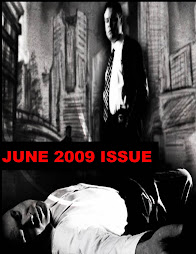 Photo: Greg Sabo on the Set of THE COURIER. Click here to see the Trailer.
Photo: Greg Sabo on the Set of THE COURIER. Click here to see the Trailer. The independent film scene's development in the 1990s and 2000s has been stimulated by a range of factors, including the development of affordable digital cinematography cameras that can rival 35 mm film quality and easy-to-use computer editing software.
Until the advent of digital alternatives, the cost of professional film equipment and stock was a major obstacle to independent filmmakers who wanted to make their own films. Studio quality filming typically required expensive lighting and post-production facilities. But the advent of consumer camcorders in 1985, and more importantly, the arrival of high-definition digital video in the early 1990s, have since lowered the technology barrier to movie production considerably. Both production and post-production costs have been significantly lowered; today, the hardware and software for post-production can be installed in a commodity-based personal computer.
Technologies such as DVD, FireWire connections and professional-level non-linear editing system software make movie-making relatively inexpensive.
Director Francis Ford Coppola, long an advocate of new technologies like non-linear editing and digital cameras, said in 2007 that "cinema is escaping being controlled by the financier, and that's a wonderful thing. You don't have to go hat-in-hand to some film distributor and say, 'Please will you let me make a movie?'
The July issue of the Acting in Columbus Newsletter offers a sampling of locally produced independent films. This issue just scratches the surface of the local "indie" scene. We will continue to report on more independent film projects and local filmmakers in future editions.










